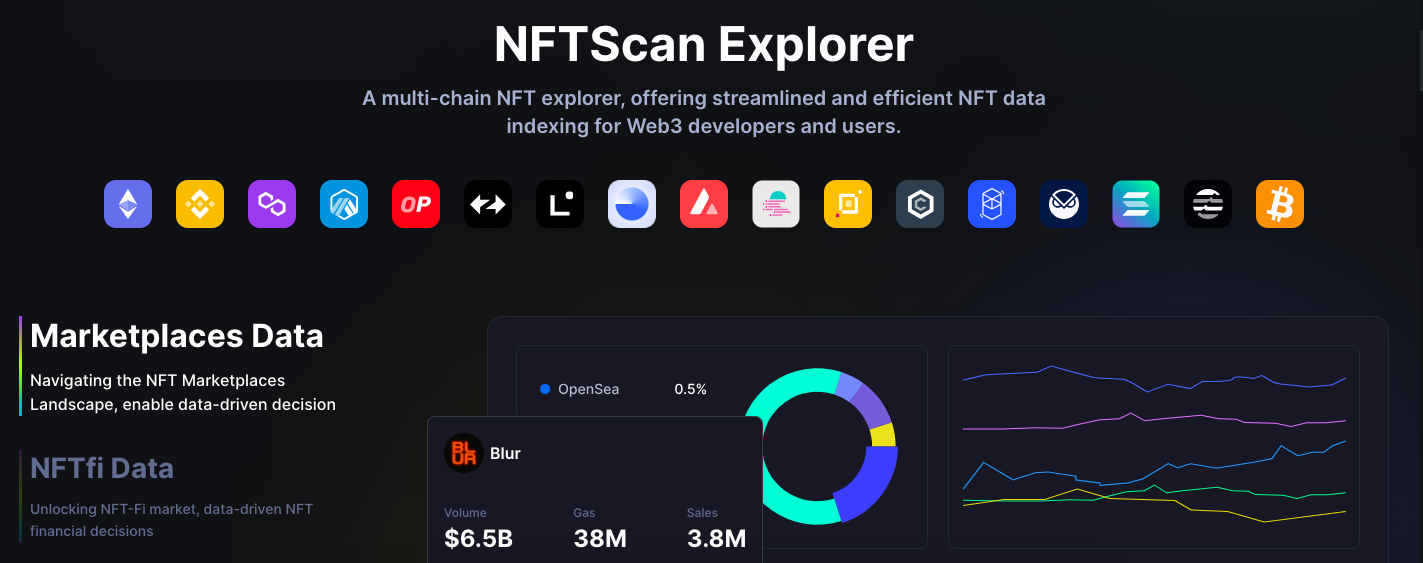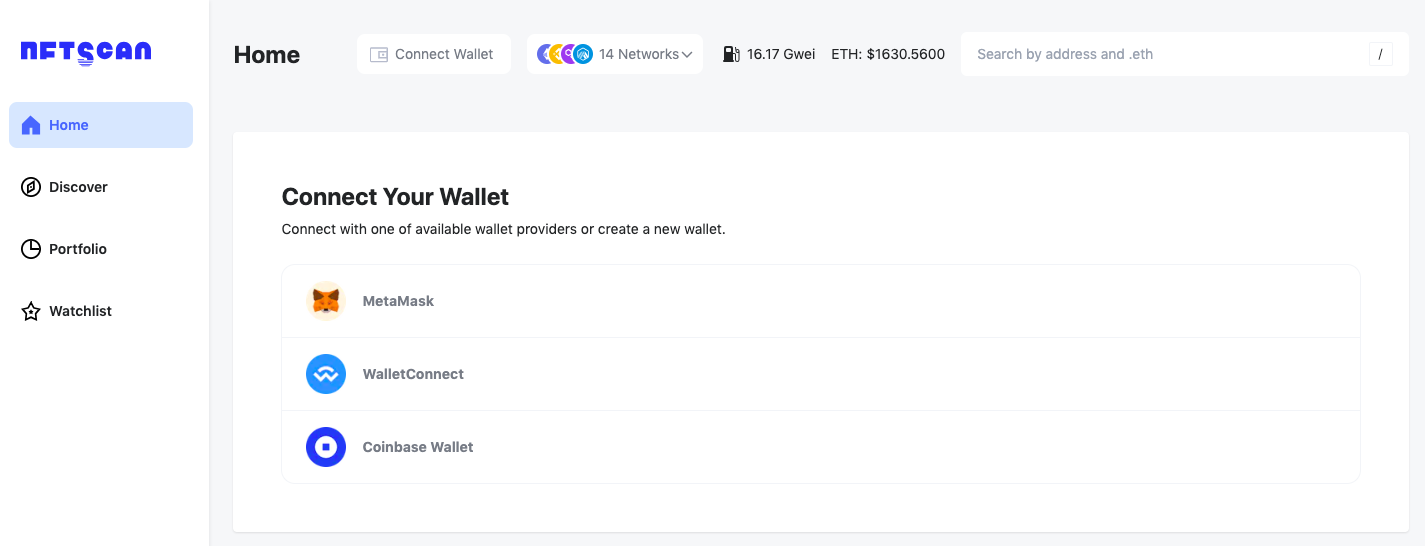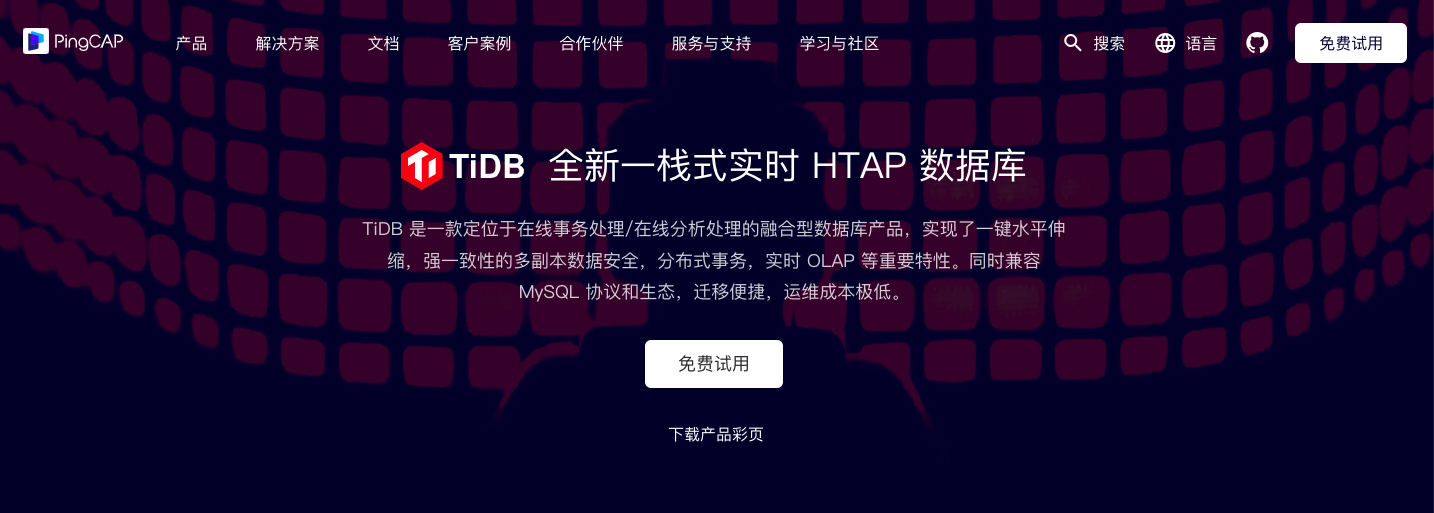NFTScan的增长秘籍:从零起步,成长为最大的NFT数据基建服务商
原创 | Odaily星球日报
作者 | 秦晓峰

当一个新的 NFT 项目在社群开始走热时,如何把握交易契机?
深入了解项目的基本情况是关键,例如持有者人数、持仓分布情况、蓝筹持有者占比、日交易量、地板价变化等等。特别是一些项目并不支持 Opensea(例如 Ordinals 铭文),还需要找到合适的交易平台。凡此种种,不一而足。
这正是 NFTScan 的用武之地。NFTScan 旗下的多链 NFT 浏览器产品,主要为 Web3 用户提供高效简洁的 NFT 资产搜索查询服务,支持地址、项目名、智能合约等多种方式进行查询,目前已扩展 17 条区块链网络。
为了拓展商业营收,在面向 C 端用户提供免费的查询服务之外,NFTScan 还推出 OpenAPI 开发者平台,主要为 Web3 开发者和新一代金融科技公司提供专业的 NFT API 数据服务,提供 NFT 数据支持,目前有 4600+ 开发者注册用户,合作案例包括 Binance NFT 交易市场、Coinmarketcap、imToken、Bybit、Kucoin、Mask 等知名项目和开发者团队。
而在业务发展中,庞大的存储容量以及计算请求,也对 NFTScan 最初采用的传统的 MySQL 数据库造成极大冲击,业务增长一度陷入停滞。最终,NFTScan 选择分布式 HTAP 数据库 TiDB 来作为核心数据架构替代原有数据库系统,有效满足了 NFT 多种场景下高并发、低延时等需求,也为 NFTScan 新业务的开展加装了增长齿轮。
如今的 NFTScan,已然成长为全球最大的 NFT 数据基础设施提供商。NFTScan 的经验,也可以为 Web3 其他赛道的玩家提供借鉴与参考。
一、多链 NFT 浏览器的进阶之路
提到 9 月 4 日,很多加密玩家会想到著名的「九四纪念日」。而对 NFTScan 联合创始人拾二(Shier)来说,这一天还有特殊的意义—— 2021 年 9 月 4 日,NFTScan 浏览器正式版本对外上线发布。一晃两年时光已经过去,NFT 也跟随大盘经历了牛熊轮转,各个蓝筹地板价不断下跌,令人唏嘘。
2021 年是 NFT 黄金时代。根据市场咨询公司 L'Atelier 的报告,当年 NFT 销售额达到 176 亿美元,环比增长约 21000% 。Opensea 的起量,也让诸多创业团队开始扎堆涌入 NFT 交易市场。
不过,拾二和 NFTScan 另一位创始人 ZK 却有不同的想法。在对 NFT 做了全面的调研后,他们发现,许多创业团队在做 NFT 相关应用开发很难直接获取全链 NFT 数据,开发门槛高,用户体验较差。“最要命的是,当时也没有第三方区块链基础设施支持 NFT 数据服务,就是有钱都买不到 NFT 数据服务。”拾二表示,最终两人有了做 NFT 基础设施的想法,买下了 nftscan.com 域名后正式入局 NFT 赛道。
在创办 NFTScan 之前,拾二曾在 DeFi 预言机赛道工作三年,而 ZK 则在加密钱包赛道工作了四年。同为技术背景出身,对底层运行逻辑比较清楚和敏感,为 NFTScan 奠定了技术底色,也让产品迭代开发更加迅速,更加及时高效地抢占市场。
当年 4 月,NFTScan 项目正式立项,开始筹备团队,并顺利拿到一轮 55 万美金的种子轮融资,开启了 NFTScan 的早期开发工作。3 个月后,NFTScan 浏览器第一个公测版本上线;同年 9 月 4 号,NFTScan 正式版本真正的对外上线发布;12 月份,NFTScan 完成了一轮 150 万美金的天使轮融资,由 Mask 领投。
2022 年,NFT 市场出现新局面,Solana、BSC 等新公链生态开始发力呈井喷态势。NFTScan 也开始实施多链战略布局,持续不断的扩展更多的区块链网络,从 BSC、Polygon 到 Arbitrum、Optimism、Solana 以及 Aptos,再到今年大热的 Bitcoin、zkSync、Linea 以及 Base。过去两年,NFTScan 浏览器从最开始只支持以太坊一条链,到现在的 17 条链。

(NFTScan 浏览器)
数据层面,目前 NFTScan 已经解析收录了 282 万个 NFT Collection, 11.4 亿枚 NFT 资产, 16.9 亿条链上记录, 1.3 亿个 NFT 钱包地址, 160 多家 NFT Marketplace, 10 多家 NFTfi 相关的数据。并且这一数据规模还在持续增长,平均每天新增 6000 个 NFT 项目, 200 万枚 NFT 资产。需要注意的是,如此庞大的数据,也对平台的数据架构造成冲击,为此 NFTScan 也进行了升级,最终选择了 TiDB 来作为核心数据架构(后文详细介绍)。
庞大数据支撑下的 NFTScan,究竟可以用来做什么?其核心功能包括 NFT 资产信息搜索查询、NFT 交易记录查询、NFT 资产实时铸造和转账记录展示,以及钱包地址的 NFT 资产持仓数据和铸造记录、交易记录等。简单来说,只要输入你想查询的 NFT 项目,在 NFTScan 上可以找到与其有关的所有链上交易信息,并按照不同维度进行归纳整理,帮助用户进行投资判断。比如,NFTScan 的 Minting 榜上会实时展示最新的热门项目铸造情况,方面用户快速跟进,抢占先机。
另外,NFTScan 浏览器还与 Etherscan 团队进行合作,在 NFT 资产详情页和用户 Profile 页面新增了 Blockscan Chat 功能,用户在 NFTScan 平台可以与任意 NFT holder 进行点对点的沟通交流。除此之外,NFTScan Portfolio 还支持用户连接自己的钱包地址,一站式的查看和管理自己在 EVM 区块链网络上的 NFT 资产数据,类似 Debank 的数据面板。

(Portfolio 功能)
根据官方数据,目前 NFTScan 浏览器的月活用户约为 10 万。“NFTScan 多链浏览器的产品定位有点像 Etherscan,因为这是一个免费的浏览器工具,所以我们并没有花太多精力去推广该产品,基本上都是自然流量和粘性用户。”拾二解释称。
二、推出 NFT API 服务实现商业创收
2021 年下半年,加密市场进入熊市,对加密企业来说最重要的是「活下去」,拓展新的营收渠道增加收入也成为 NFTScan 的核心议题。针对 C 端用户免费浏览器工具很难创收,NFTScan 顺势将目光瞄准了 B 端加密企业,主要有两类:
一是 NFTScan as a Service 服务,这是一个面向区块链网络开发者团队(公链/Layer 2 等)而推出的 SaaS 服务。随着 NFT 领域的发展,NFT 生态已经成为区块链网络必不可少的板块。所以为了支持更多的区块链网络,NFTScan 推出了这项服务,有偿为新的公链提供 NFTScan 一整套基础设施的开发工作,其中包括 C 端 NFTScan 浏览器产品和 B 端 NFT API 数据服务。举个例子,某个新公链上 NFT 想要扩大生态知名度,可以选择上述服务,接入 NFTScan 平台让更多用户了解更多动向,为生态导流。
根据官方介绍,早期 NFTScan as a Service 服务费用会根据区块链生态的开发者规模进行综合评估,数万美金不等,目前已经得到了 Polygon、Optimism、Aptos、PlatON、Cronos、Moonbeam 6 家基金会的资金支持。
二是 OpenAPI 开发者平台,主要为区块链项目方提供专业的多链 NFT API 数据服务,获取 NFT 数据源,这也是 NFTScan 初心所在。利用 NFTScan 的 API,开发者可以聚合不同链上 NFT 的数据,实现跨链数据的统一访问,大大简化了开发复杂性。此外,NFTScan API 提供的丰富数据,可以支持开发者构建出功能更加丰富的应用。相比自行抓取链上数据,直接使用 NFTScan API 更加稳定可靠,为 NFT 应用开发提供了重要支撑,开发者可以聚焦产品创新,而不用重复解决底层数据获取问题。利用好 NFTScan NFT API,可以更快更好地推进 NFT 技术在更多垂直领域的应用。
费用方面,为了更合理地定价服务,NFTScan 使用“计算单元”(CU)来描述每个 API 的成本;相比于请求次数定价来说,CU 更加公平。NFTScan 目前对外输出了 60 多个 NFT API 接口,可以满足开发者大部分的业务场景,每一个 API 都有自己的 CU 定价,因为背后消耗的资源是不一样的,所以要单独定价。一些定制化服务,由于需要独立的环境以及针对性分析,消耗资源更高,收费也水涨船高。不过,拾二也表示,未来定制化服务成为公用 API,形成规模优势,费用也会降低。
目前 NFTScan 开发者平台的 CU 价格是 : 1 美元可以购买 100 万 CU,如果按照常规的使用场景来获取 NFT 基础数据,NFTScan NFT API 的平均单次 API 请求消耗 500 CU,那么 100 万 CU 可以请求 2000 次,也就是 1 美元可以请求 2000 次。 用户购买后,CU 将永久存储在帐户中,直到用完为止。
根据官方数据,目前 API 开发者平台有 4600+ 开发者注册用户,累计对外响应 NFT API 请求次数有 55 亿次,服务了数百家优质的 Web3 项目和基础设施,其中包括:Binance NFT 交易市场、Coinmarketcap、imToken、Bybit、Kucoin、Mask、OneKey、Coin 98、HashKey 集团、慢雾科技等知名项目和开发者团队。

相关合作平台对 NFTScan 的数据质量和服务,也给予了较高的评价。“通过此合作,NFTScan 将与 Binance NFT 密切合作,推动 NFT 领域的透明度、安全性和创新。通过提供全面的数据洞察和为开发者提供 NFTScan 的 API 服务,NFTScan 将为 NFT 行业带来更多的发展动力。”
拾二透露,目前 API 服务带来的营收基本可以实现盈亏平衡,他们下一步的目标是继续拓展更多的 B 端企业。“目前来看,NFT 数据赛道的规模是比较小的,主要集中在 NFT 交易市场、加密钱包、区块链大数据分析、Socialfi 等领域。我们对市场的预估,相关项目数量在 1500 家左右,属于大 B 端数据服务。目前来看,规模和体量并不大。但是随时整个区块链和 Web3 领域的发展,我们觉得这一市场规模也会不断的扩大。”
三、海量数据冲击底层技术架构,NFTScan 凭借 TiDB 实现破局
过去 2 年,NFTScan 从 0 到 1 打造了一个全球领先的 NFT 数据基础设施,不仅有 C 端的 NFT 浏览器产品,还有服务区块链开发者团队的 NFTScan 开发者平台,为全球范围内的 Web3 开发者提供多链 NFT 数据服务。
目前,NFTScan 数据库收录了超过 282 万个 NFT 合约地址, 10 亿多枚 NFT 资产数据, 17 亿条多链 NFT 链上交互记录,并且这个数字还在以每日 6000 个 NFT 合约地址和 200 万个 NFT 资产的速度在递增。
增量大、活跃度高,这是 NFTScan 业务的两大特点,也决定了其对数据库技术架构要求极高,需要具备全面、实时、高效等特性,并满足高并发、低延时等需求。选择一个合适的,能满足业务需求的数据存储体系对 NFTScan 来说至关重要。
此前,NFTScan 使用 Amazon Web Services (AWS) 上的 MySQL 和 Elasticsearch 作为其核心数据库解决方案。该解决方案在使用半年后, 出现较多问题(可扩展性差、存储和维护成本高、使用率下降、反复出现的精度错误等)以至于无法满足业务的快速增长。
最终,NFTScan 最终选择了一个名为 TiDB 的解决方案来作为核心数据架构,替代原有数据库系统,并用时两个月将底层数据库系统全部切换到 TiDB 的工作。

TiDB 是 PingCAP 公司自主设计、研发的开源分布式关系型数据库,是一款同时支持在线事务处理与在线分析处理的融合型分布式数据库产品。该方案的优势如下 NFTScan 团队在对比选型中被 TiDB 的兼容 MySQL、弹性伸缩、一体化 HTAP 架构以及高可用等特性所吸引:
(1)TiDB 在传输协议和 SQL 语法等方面与 MySQL 高度兼容,NFTScan 可以轻松地将数据迁移到 TiDB,MySQL 兼容性大大减少了研发团队使用新数据库的学习成本、时间和精力,同时也能加速数据库架构的迁移工作。
(2)TiDB 采用计算和存储分离的分布式架构以及底层分布式存储数据的设计机制,NFTScan 可以根据读写流量的实时变化灵活伸缩计算存储资源,最大限度地提高了资源使用率,并大幅降低了成本。以业务端的 API 服务为例,平均查询时间从 10-100 毫秒下降到 10 毫秒或更少;即使处理 1, 000 QPS,这样的查询速度也能保持稳定。
(3)TiDB 的 HTAP 能力可以同时处理事务和分析工作负载,一套数据库即可满足事务型数据库和分析型数据库的需求,不仅完美地满足了 NFTScan 不断增长的业务需求,还降低了整体运营成本。
(4)TiDB 本身的数据副本同步机制和内置的灾备方案,保证了整体数据库服务的高可用性。
从最终效果来看,TiDB 完美地满足了 NFTScan 高吞吐量和低延迟的核心要求。
“NFTScan 依托于 TiDB 强大的分布式存储计算能力,构建了具备高性能,可弹性扩展,支撑海量数据高速计算的数据存储体系。TiDB 优秀的分布式存储机制设计,以及灵活的按需弹性水平伸缩的特性,让 NFTScan 能够在不断拓展新的区块链网络以及面对日益增长的 API 服务请求流量时,平稳高效应对各类高并发的 OLTP 和 OLAP 的场景。 ”拾二补充说。
截至 2022 年 11 月,NFTScan 的 TiDB 数据库存储了大约 6 TB 的业务数据,QPS 达到 5000 ,平均查询时长 40 ms,各种应用在 TiDB 上运行稳定。
结束语
实际上,NFT 市场专注于数据挖掘的平台不只有 NFTScan,但都没有表现出较强的优势,甚至慢慢被市场淘汰。NFTScan 也并非没有瑕疵,比如 Portfolio 无法过滤垃圾 NFT 以及钓鱼项目,看起来很繁杂。通过多方面市场需求的反馈,NFTScan 也已经意识到这个问题,正在制定相关策略进行解决和优化。但瑕不掩瑜,最终 NFTscan 还是凭借自身优势成为最大的 NFT 数据基础服务商。
“我们的优势就是我们聚集在 NFT 数据层面,专注并且极致。”拾二解释称,链上数据有很多,但 NFTScan 只解决一个问题,就是 NFT 的数据解析和标准化工作。“我们始终围绕 NFT 数据进行开发和建设,让数据的价值最大化,服务更多的人。”



